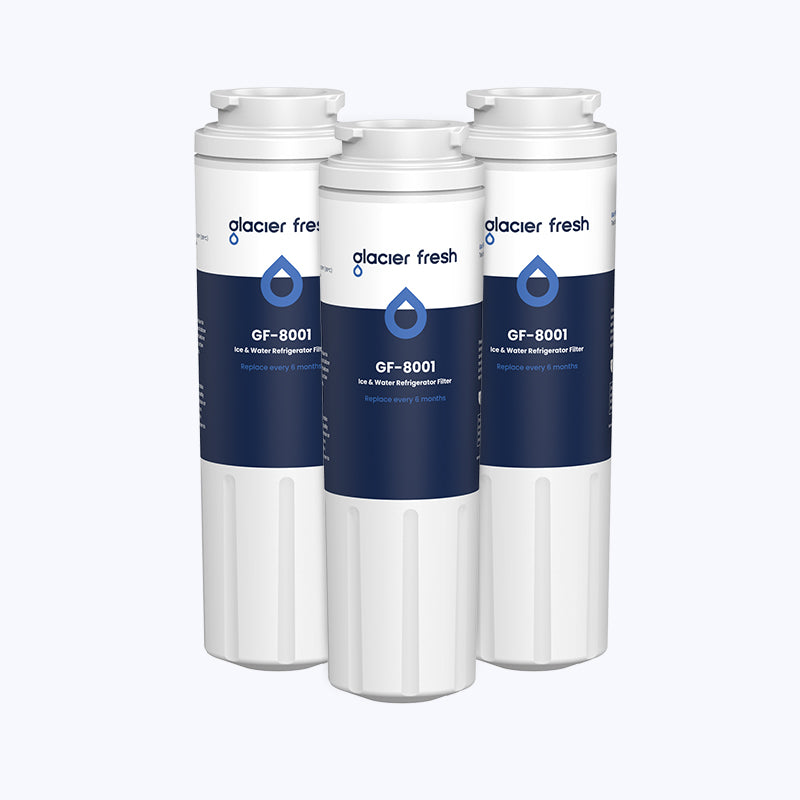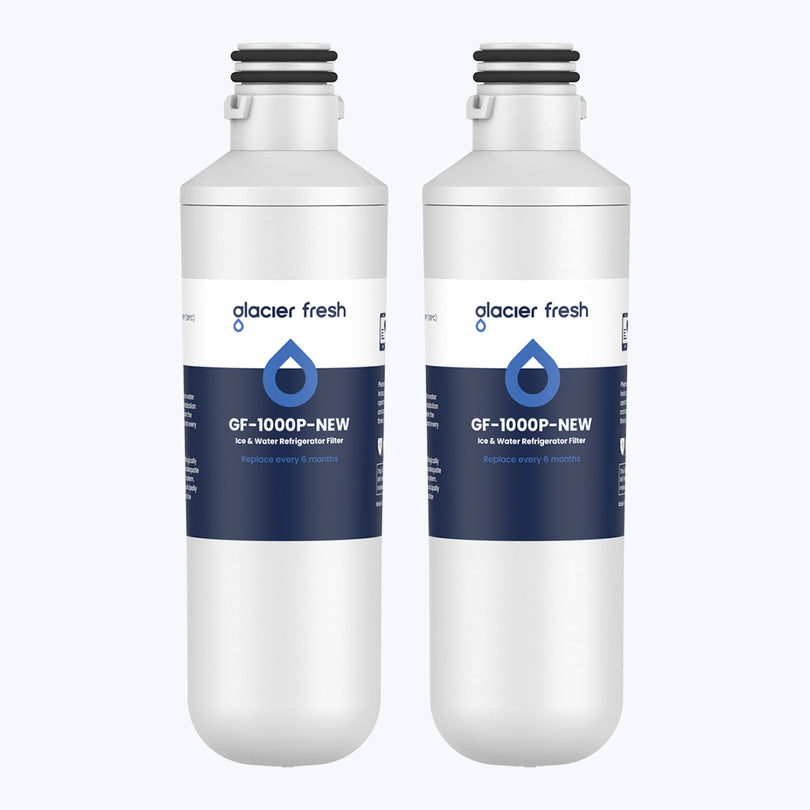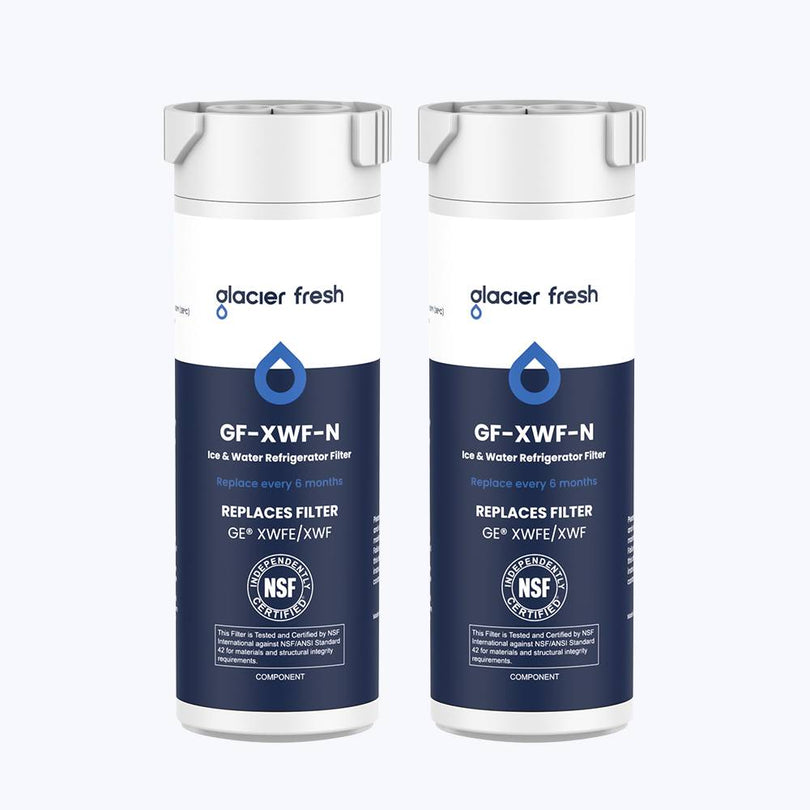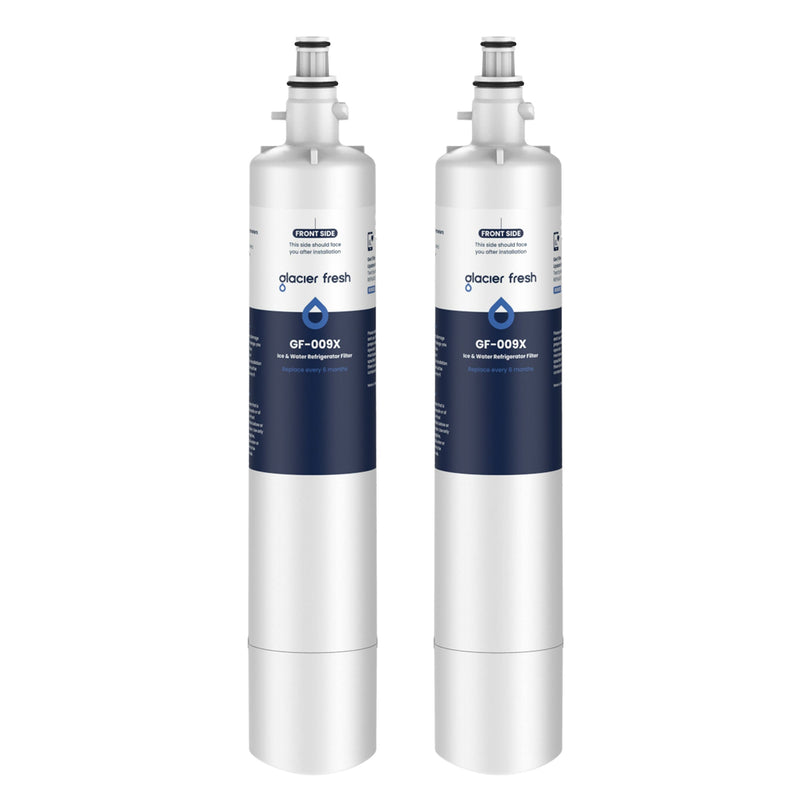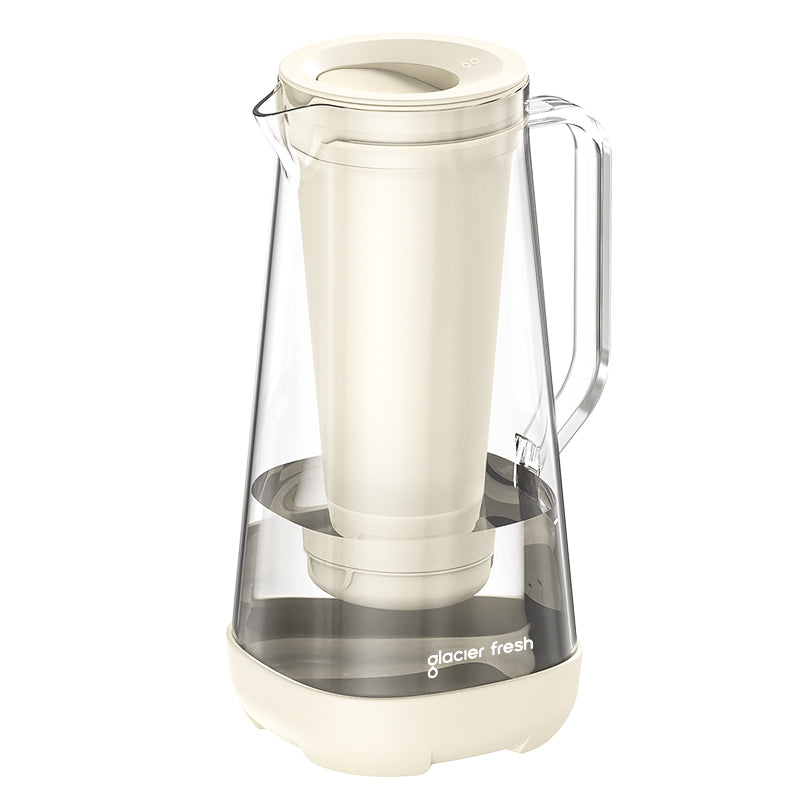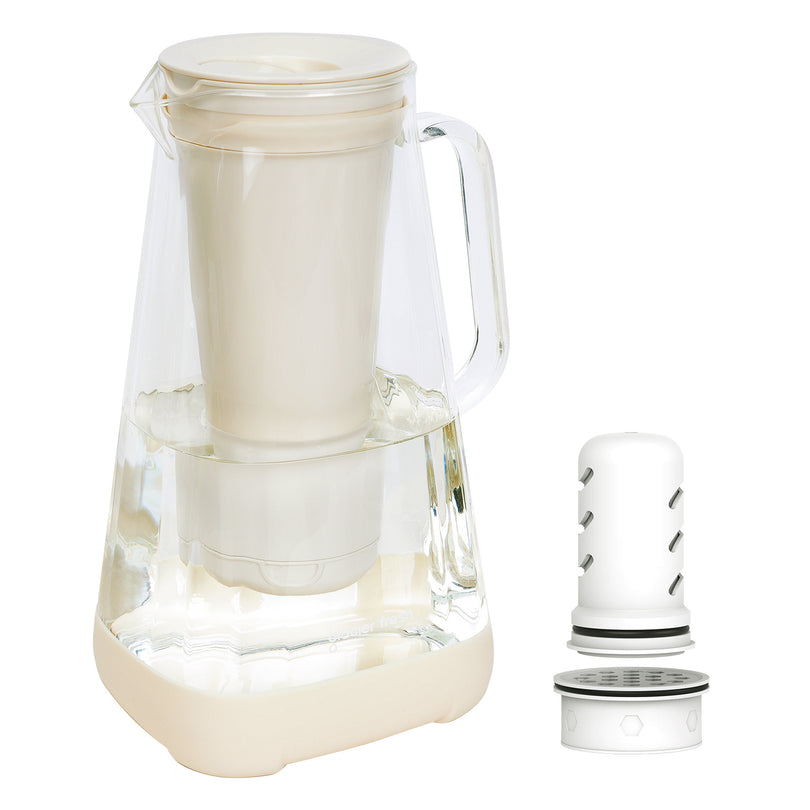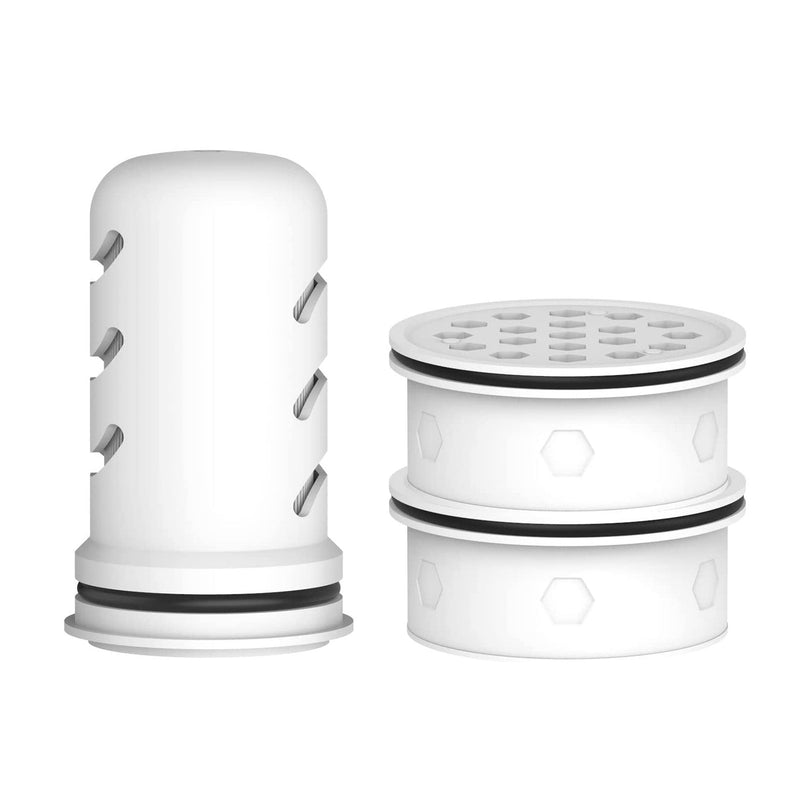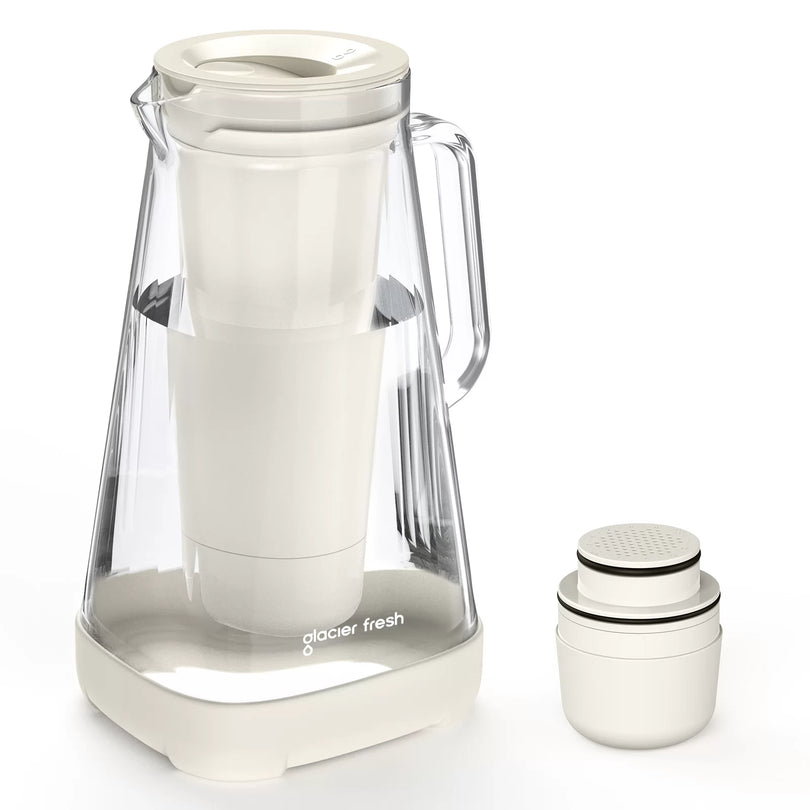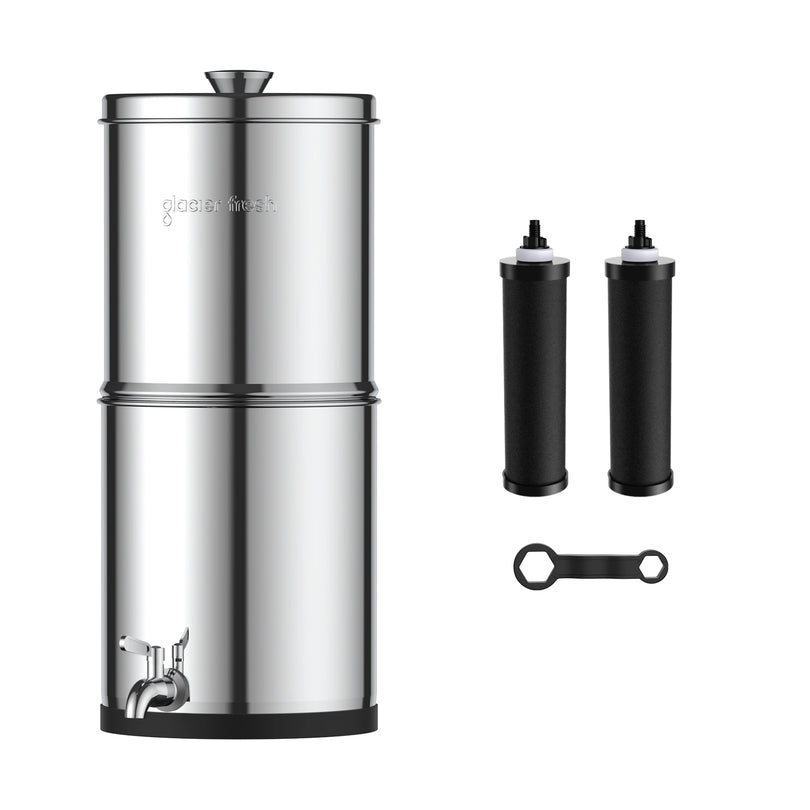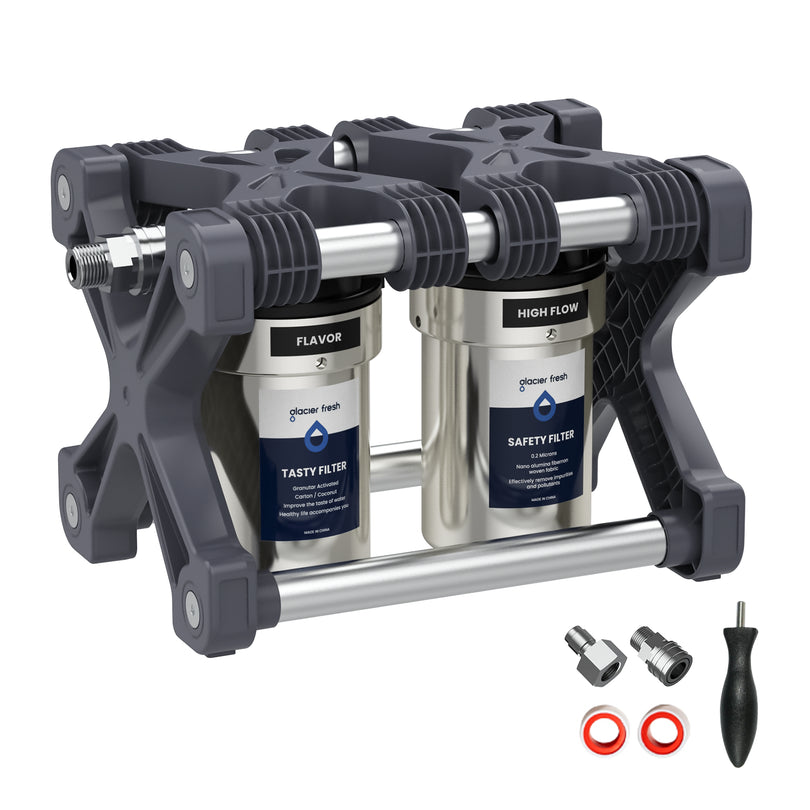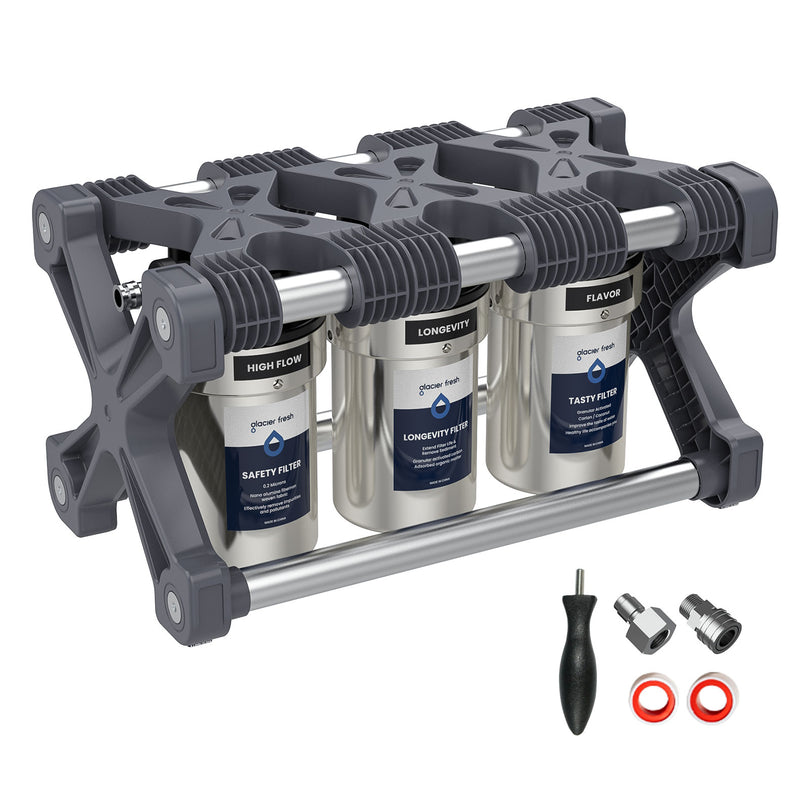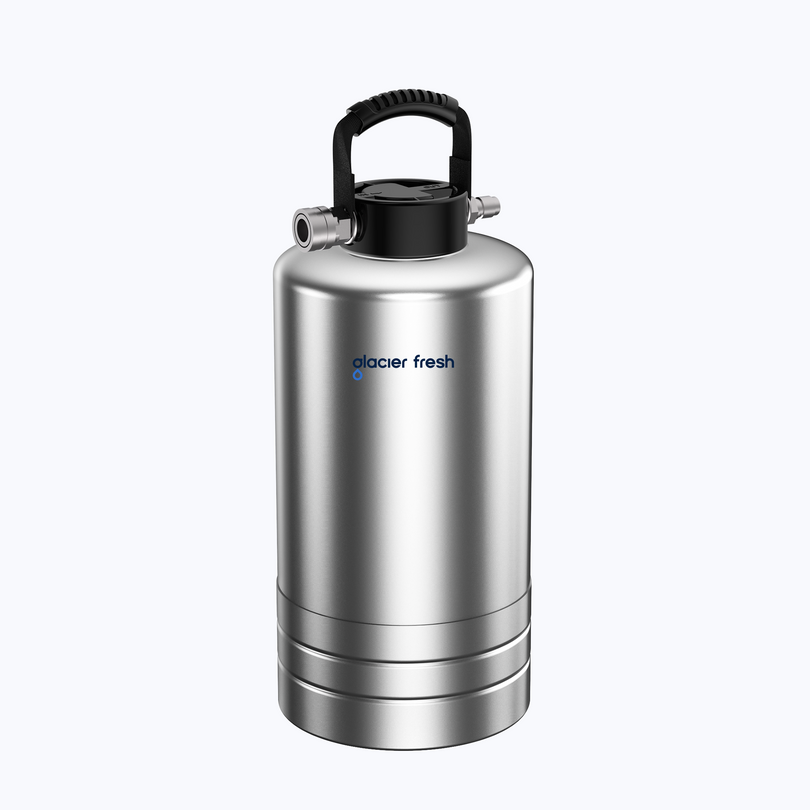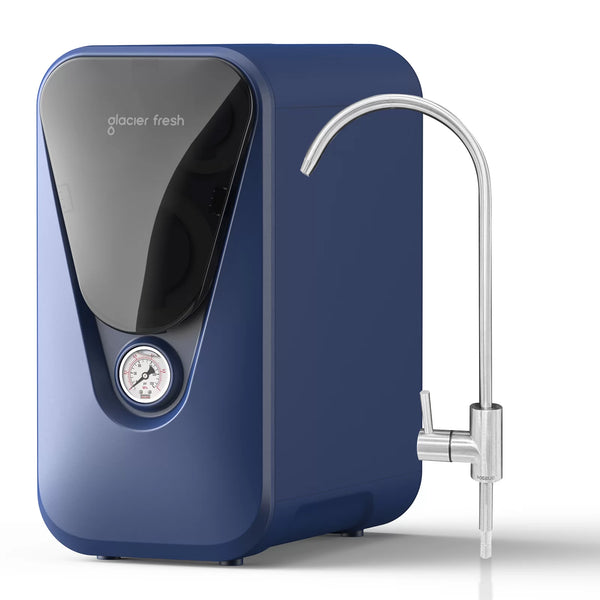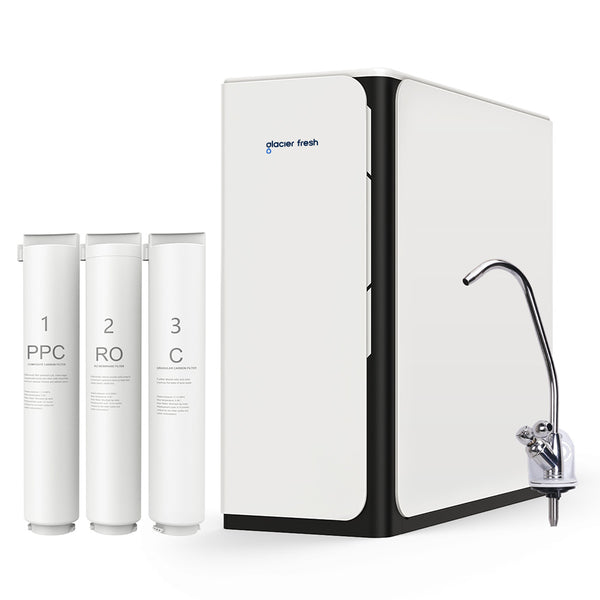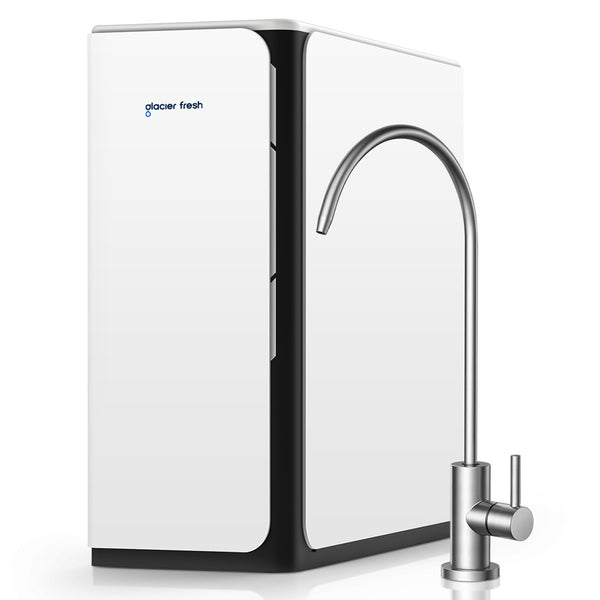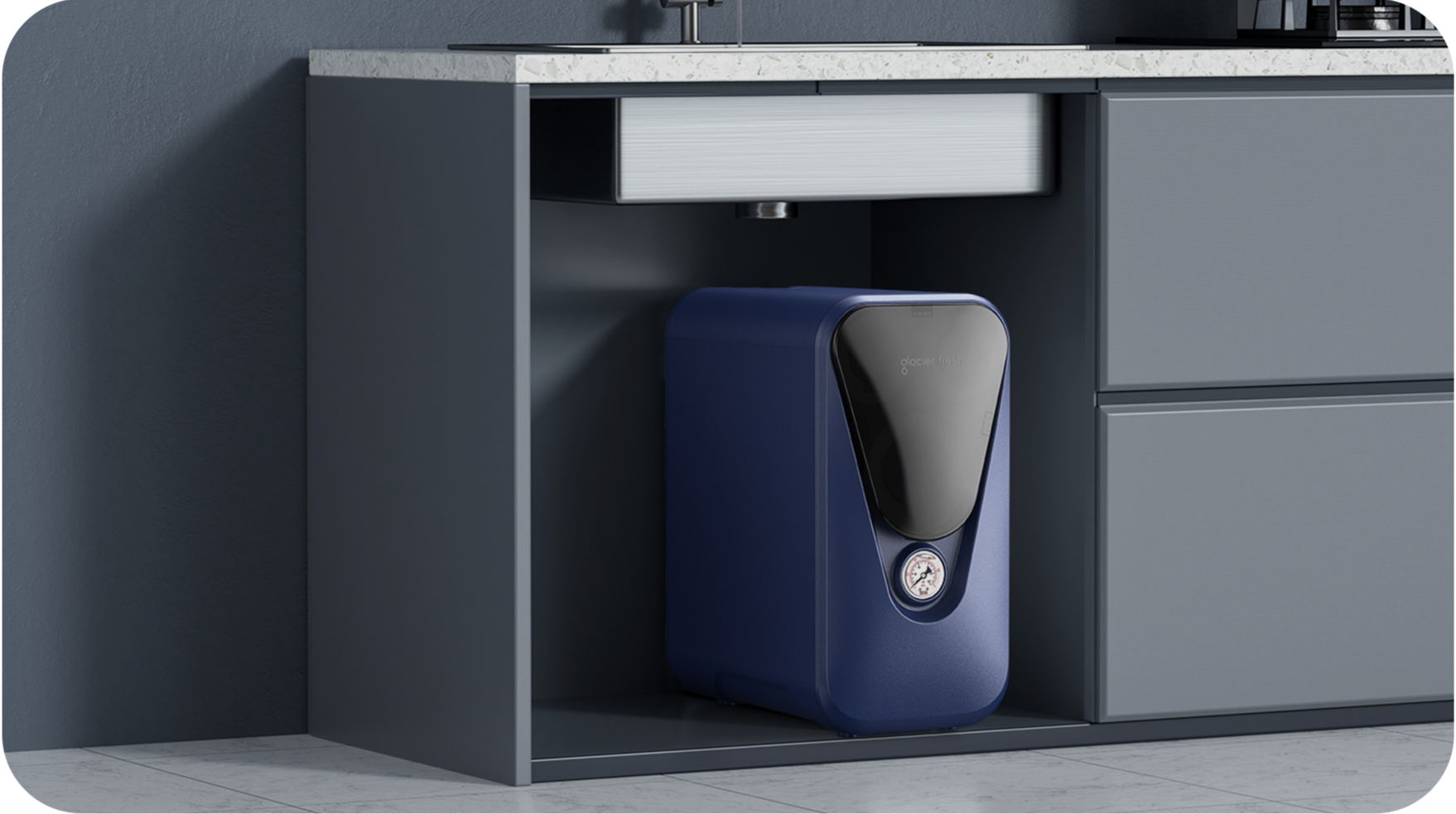Reverse osmosis (RO) water systems are advanced filtration systems that use a semi-permeable membrane to remove impurities, contaminants, and dissolved solids from water. The process works by forcing water through this membrane under pressure, allowing only pure water molecules to pass through while blocking harmful substances such as chlorine, lead, heavy metals, and bacteria. RO systems are highly effective in improving water taste, odor, and safety, making them a popular choice for household water purification.
Many households choose an under sink water filter that utilizes reverse osmosis technology due to its convenience and space-saving design. These systems are installed directly under the kitchen sink, providing a steady supply of clean drinking water through a dedicated faucet. An under sink water filter with RO is ideal for families seeking a reliable solution for daily hydration and cooking needs, offering peace of mind by delivering high-quality, contaminant-free water right at home.
Yes, reverse osmosis (RO) water filtration systems do produce wastewater as part of the filtration process. To separate contaminants from clean water, RO systems push water through a semi-permeable membrane, but not all the water passes through. A portion is used to flush away the rejected impurities, which becomes wastewater. Traditional systems can waste up to four gallons for every one gallon of purified water, raising concerns about water efficiency in home use.
However, modern under sink water filter systems like the Glacierfresh RO filter have significantly improved this ratio. With a wastewater ratio of 3:1, the Glacierfresh under sink water filter meets both economic and environmental standards by reducing waste and optimizing filtration efficiency. This makes it an excellent choice for eco-conscious households seeking a reliable under sink water filter that balances clean water delivery with smart water usage. For those looking to install an effective and sustainable under sink water filter, this system offers both performance and peace of mind.
The Pure to Drain Rate refers to the ratio of purified water produced versus the amount of wastewater discharged by a Ro water filter. For example, a Ro water filter with a 3:1 ratio means that for every 3 gallons of clean water generated, only 1 gallon is wasted. This metric is essential when evaluating the efficiency of an under sink reverse osmosis system. A higher pure-to-drain ratio indicates better water conservation, making the Ro water filter an eco-friendly choice for households aiming to reduce water waste and environmental impact.
An efficient Ro water filter not only helps conserve water but also lowers utility costs over time by minimizing waste. Systems with better Pure to Drain Rates are more sustainable and cost-effective for daily use, especially in areas with limited water resources. When choosing a filtration system, always check this rate, as it directly reflects the overall performance and efficiency of the Ro water filter. By selecting a model with a strong ratio, you're investing in clean, sustainable water without unnecessary waste.
The primary advantage of an under sink reverse osmosis water filter is its exceptional ability to remove a wide spectrum of harmful contaminants, including lead, fluoride, chlorine, heavy metals, and even certain bacteria. This filtration process forces water through a semi-permeable membrane, allowing only pure water molecules to pass through. As a result, an under sink reverse osmosis water filter delivers clean, safe, and great-tasting drinking water directly from your tap, making it a reliable solution for households concerned about water quality.
Beyond purity, the under sink reverse osmosis water filter offers unmatched convenience and long-term value. Installed discreetly under your kitchen sink, it provides a continuous supply of filtered water without the need for bulky bottles or countertop units. Over time, using an under sink reverse osmosis water filter helps reduce plastic waste and saves money compared to purchasing bottled water. For those seeking a sustainable, health-conscious, and cost-effective water solution, this system stands out as one of the best choices available.
An under-sink water filter is designed to remove a wide range of common water contaminants, making your tap water safer and healthier to consume. It typically targets chlorine, lead, rust, mercury, and volatile organic compounds (VOCs). Many under-sink water filter models also reduce cysts, pesticides, and herbicides that may enter the water supply through agricultural runoff or old plumbing. For homes with aging infrastructure, this filtration is especially crucial for protecting against lead and sediment.
Additionally, an under-sink water filter can reduce bad taste and odor caused by sulfur or chlorine, ensuring the water tastes clean and fresh. While some under-sink water filter systems focus primarily on aesthetic improvements, others use multi-stage filtration to address both chemical and physical contaminants. To maximize protection, it’s important to choose a certified under-sink water filter that suits your specific water quality concerns.
Yes, a water filter for the sink significantly improves the taste and odor of tap water by removing chlorine, sulfur compounds, and other organic materials that contribute to unpleasant flavors. Many households report a noticeable difference immediately after installing a water filter for the sink, especially if their municipal water supply uses heavy chlorine treatment. Some filters also tackle bacterial by-products and sediments, which further enhances the freshness of the water.
In addition to better taste, a water filter for sink helps you avoid buying bottled water, saving money and reducing plastic waste. For coffee, tea, and cooking, cleaner water can make a big difference in flavor. The right water filter for the sink will not only protect your health but also improve your overall kitchen experience. Just be sure to maintain your water filter for the sink regularly to preserve its effectiveness.
A RO water filter operates by forcing water through a semipermeable membrane that blocks particles as small as 0.0001 microns. This allows a RO water filter to remove contaminants that conventional carbon or sediment filters can’t handle—like arsenic, fluoride, nitrates, and total dissolved solids (TDS). Most standard filters only remove chlorine, sediment, and larger particles, but a RO water filter delivers much more thorough purification.
Moreover, a RO water filter often comes as a multi-stage system, typically including pre-filters, a reverse osmosis membrane, and a post-carbon filter for polishing. This layered design ensures both chemical and microbial safety. While standard filters are great for basic filtration, a RO water filter is ideal for people who want ultra-pure water for drinking, cooking, or even aquariums.
Installing an under-sink water filter system usually takes 1 to 2 hours, depending on your plumbing experience and the complexity of the system. Most under-sink water filter system packages include detailed instructions and all necessary parts, allowing for a DIY-friendly setup. You'll typically need a drill, a wrench, and a bit of patience to connect the system to your cold water line and install a dedicated faucet if required.
For those who prefer not to tinker with plumbing, hiring a professional ensures a clean, leak-free setup and takes even less time, often under an hour. Once installed, an under-sink water filter system is out of sight and requires minimal maintenance. Whether you’re in a rental or a permanent home, an under-sink water filter system offers a great balance of convenience and performance without cluttering your countertop.
The RO membrane in an under-sink RO system typically lasts 2 to 3 years, while the pre-filters and post-filters need replacement every 6 to 12 months, depending on water quality and usage. Regular maintenance of your under-sink RO system is essential to prevent clogging, bacterial buildup, and reduced efficiency. Some units come with reminders or indicators to help you keep track of filter changes.
If you notice a drop in water pressure or a change in taste, that’s often a sign your under-sink RO system needs attention. Investing in a system with easy-to-change cartridges can save time and effort. By keeping your under-sink RO system in top condition, you'll ensure consistent water purity and extend the life of the entire system.
An under-sink reverse osmosis water filter offers powerful purification in a compact, space-saving design. It removes up to 99% of contaminants like fluoride, arsenic, nitrates, and heavy metals. For families concerned about water safety, an under-sink reverse osmosis water filter is one of the most effective solutions available for household use. It improves taste, clarity, and odor, making it ideal for drinking, cooking, and even baby formula preparation.
Another benefit is convenience. Once installed, an under-sink reverse osmosis water filter quietly delivers purified water on demand without taking up counter space. It’s especially appealing in modern kitchens where aesthetics and cleanliness matter. Compared to countertop systems, an under-sink reverse osmosis water filter provides higher flow rates and cleaner design integration.
An under-sink reverse osmosis water filter can eliminate a wide variety of impurities, including lead, chlorine, fluoride, arsenic, nitrates, bacteria, and total dissolved solids (TDS). This high level of filtration makes the under-sink reverse osmosis water filter especially suitable for households with questionable tap water quality or those using well water. Its membrane filtration ensures that even microscopic contaminants are removed.
Many systems also include activated carbon and sediment filters for multi-layered protection. This ensures that your under-sink reverse osmosis water filter tackles both physical and chemical pollutants. By removing these substances, the under-sink reverse osmosis water filter delivers fresh, safe, and great-tasting water every time you turn on the tap.
An under-sink water filter system improves water quality by reducing or eliminating harmful contaminants like chlorine, lead, sediment, and VOCs. These elements can affect both your health and the taste of your water. The filtration process in an under-sink water filter system ensures that only clean, filtered water comes out of your kitchen faucet, giving you peace of mind with every sip.
Additionally, many under-sink water filter system models are equipped with multi-stage filters, combining carbon blocks, sediment screens, and sometimes specialty media for added performance. These components work together to make sure your under-sink water filter system delivers water that’s safe for drinking, cooking, and even washing produce.
Most under-sink water filter cartridges need to be replaced every 6 to 12 months, depending on your water quality and daily usage. Failing to replace the under-sink water filter on time can lead to reduced effectiveness and poor-tasting water. High-sediment water may clog the filter faster, shortening its lifespan.
Some advanced under-sink water filter models come with filter life indicators or timers to help you stay on schedule. Regular replacement ensures optimal filtration and extends the life of your entire system. Keeping your under-sink water filter updated guarantees consistent water quality and peace of mind.
Yes, many RO water filter systems are designed for easy home installation, even by individuals with minimal plumbing experience. These kits usually include color-coded tubing, quick-connect fittings, and clear instructions. With some basic tools and patience, you can install a RO water filter in about 1 to 2 hours.
However, if you’re not comfortable working under the sink or want a guaranteed leak-free setup, a plumber can professionally install the RO water filter quickly. Once installed, the RO water filter operates automatically and only requires periodic filter replacements. The ease of use and high performance make it a practical choice for many households.

